Chinese artist Lei Yixin was born in 1954 in Changsha, Hunan Province. His family name is Lei and his given name is Yixin. Lei’s family were scholars. During Chairman Mao’s Cultural Revolution, Lei spent seven years being “re-educated” as a farmer, working in the fields. He kept a sketchbook. When he was released in 1978, he presented it as his portfolio to support his application to the sculpture and painting departments of Guangzhou Academy of Fine Arts. Impressed with the high quality of his work, both departments wanted him in their programs. He graduated in 1982 in sculpture. Lei won first prize in national competitions, three years running, and was recognized by the government as a master sculptor with a lifetime stipend. Lei and his workshop produce on average of six sculptures every year, and his works have been placed in over 150 cities.
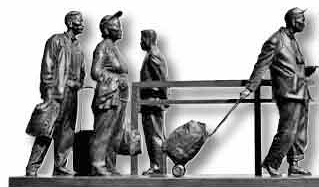
“Passing Customs” (1999)
“Passing Customs” (1999) (bronze) was Lei’s third National Prize and went to the National Art Museum of China. The work depicts three Chinese people who are about to cross the border out of China for the first time. The elderly man ahead of the group is dressed in a suit, but his pant legs are rolled up as a farmer would wear them. He wears sneakers and a baseball cap, and he pulls a small suitcase. He is followed by a man and a woman wearing the same mixed attire. The water bottles and cigarette boxes stuffed in their pockets are things they deemed necessary. Lei commented, “I saw them when I went through customs and traveled abroad for the first time in my life, to Malaysia in the early 1990’s. Almost all the people around me, and also myself, were like them. I thought it to be a very interesting scene. It showed a phase in China’s history.”
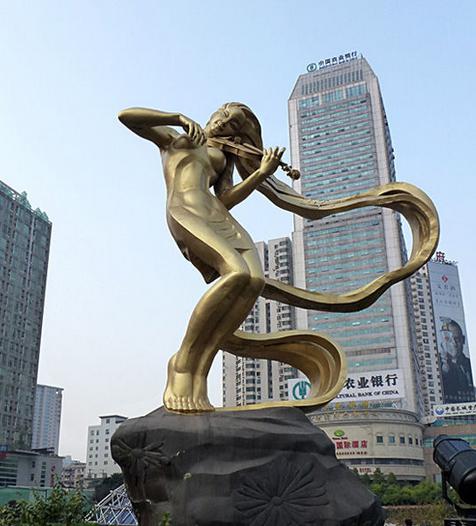
“Liayang River” (2006)
“Liayang River” (2006) (45’ tall) (bronze) is placed in Lotus Square, a commercial area in Changsha, the capital and largest city in Hunan Province. The Liayang River meanders through 67 miles of the province. Lei’s curvy female with long, flowing hair is meant to depict the winding river. The figure is posed as if she is playing the violin, but there is no bow. The lyrical quality of the sound of flowing water is suggested.
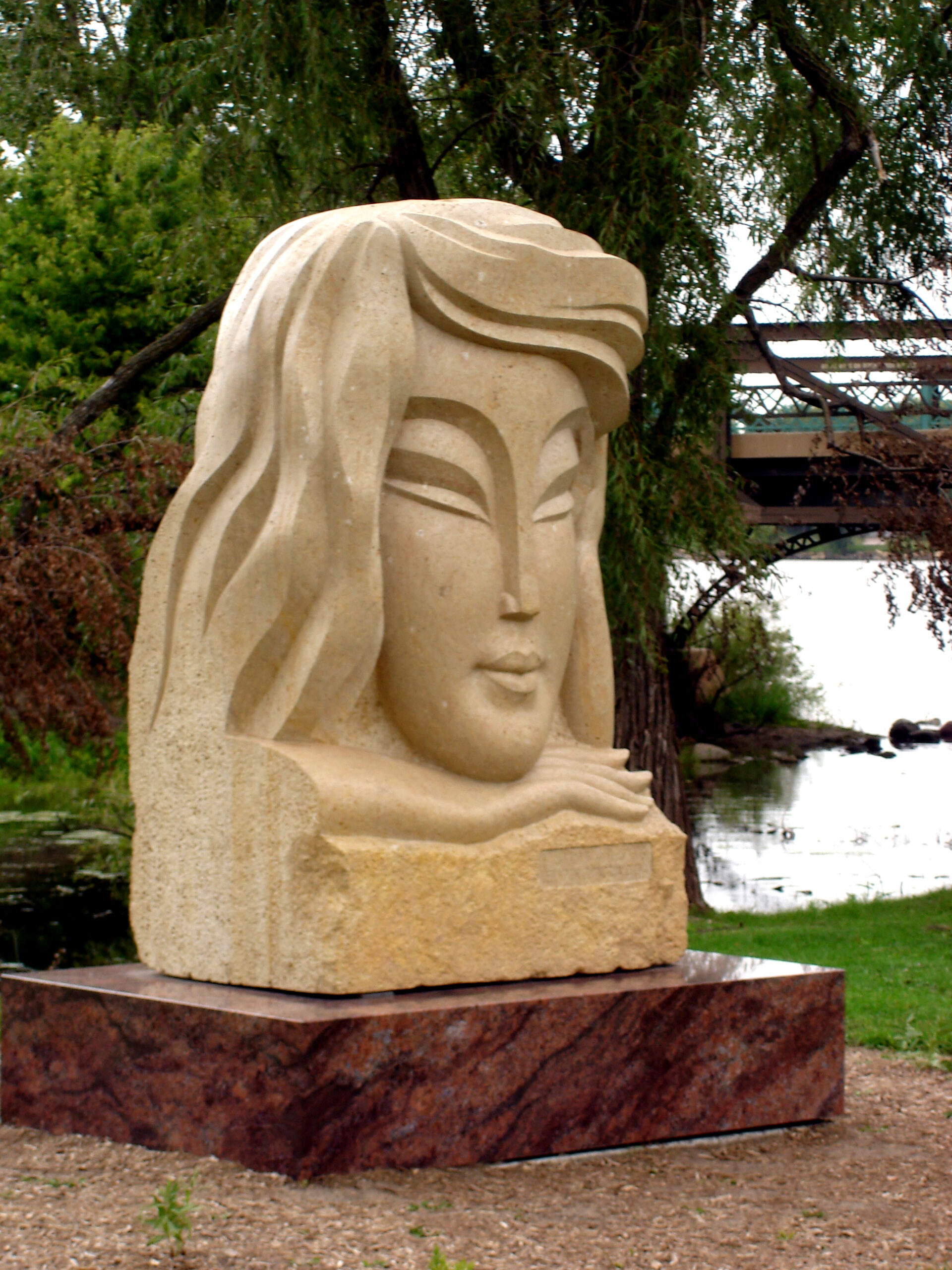
The city of St Paul, hosted the first Minnesota Rocks! International Stone Carving Symposium in 2006. Artists from several countries participated. They had six weeks to carve their concepts from a block of Minnesota stone. The competition took place in the open air, and the public was invited to view the work in progress. Twelve of the sculptures were selected to be installed in St. Paul parks. Lei’s “Meditation” (2006) (7’ 7’’ tall) was placed in Phalen Lake Park. The sculpture depicts the elegant, elongated face of an Asian woman. Her shoulder-length hair surrounds her face. Her eyes are closed, and her chin rests on one hand in a meditative pose. Lei’s sculptures in China were considerably larger requiring assistance from his team. He said this was the first sculpture he had carved on his own.
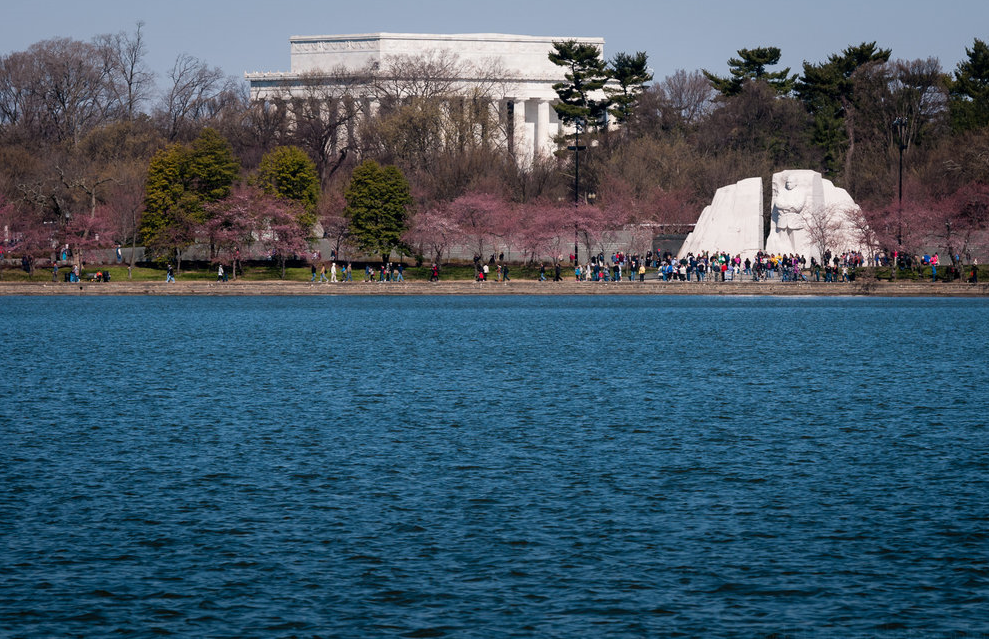
Martin Luther King, Jr. Memorial
Soon after Martin Luther King was assassinated in 1968, a foundation was formed to plan and execute a memorial in Washington, D.C. The international design competition received over 900 proposals from 52 countries. After years, no decision was reached. The foundation finally selected the phrase “out of the mountain of despair, a stone of hope” from King’s “I have a dream” speech to be the theme. They also decided the monument would be carved from a white granite found only in China. They were unable to find an artist to create the monument until three members of the foundation from Washington, DC, heard about the “Minnesota Rocks!” competition. They arrived their unannounced. Lei’s “Meditation” caught their attention, and it was decided to offer him the commission. Lei was relatively unknown in the west, but he was named head sculptor in 2007. He said, “At such a core location, carving such a special character is the highest honor for an artist.”
There were immediate protests about the race and nationality of the artist, as had been the case with many memorials. The Statue of Liberty was carved by a Frenchman. The commission in 2007 for the Vietnam Veterans Memorial was given to Maya Lin, a woman of Asian descent. Lei was not an African-American, but Chinese, and he had carved Chairman Mao. So, why not an African-American sculptor or at least an American?
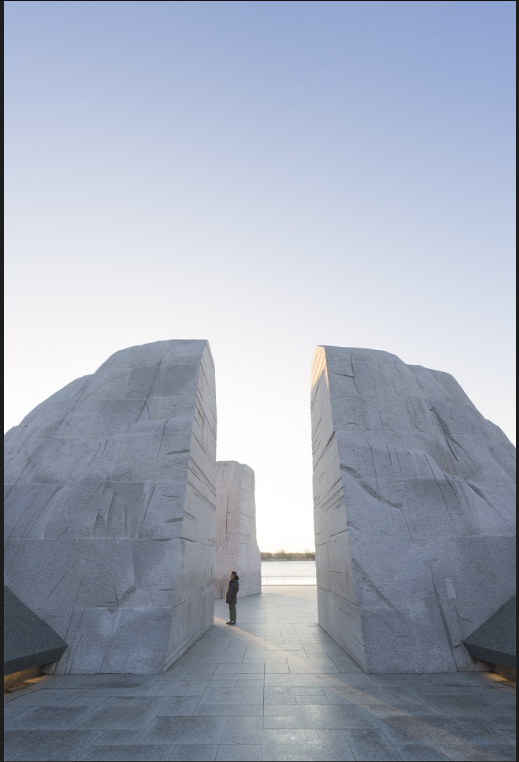
Mountain of Despair
The stone selected was white Chinese granite; therefore, the major part of the sculpture was carved in China. A large boulder was cut into three parts. The mountain of despair was represented by two of the boulders. Fourteen quotations from King’s speeches are carved on the walls divided by the path between the two stones. The third stone, set in front of the others, depicts the standing figure of King, moving forward out of the mountains. Lei and his team carved the three major granite blocks and then divided them into 159 separate pieces. They were shipped to the Port of Baltimore, transported to the National Mall, and reassembled. This massive operation was accomplished by Lei and his Chinese team. American stoneworkers protested.
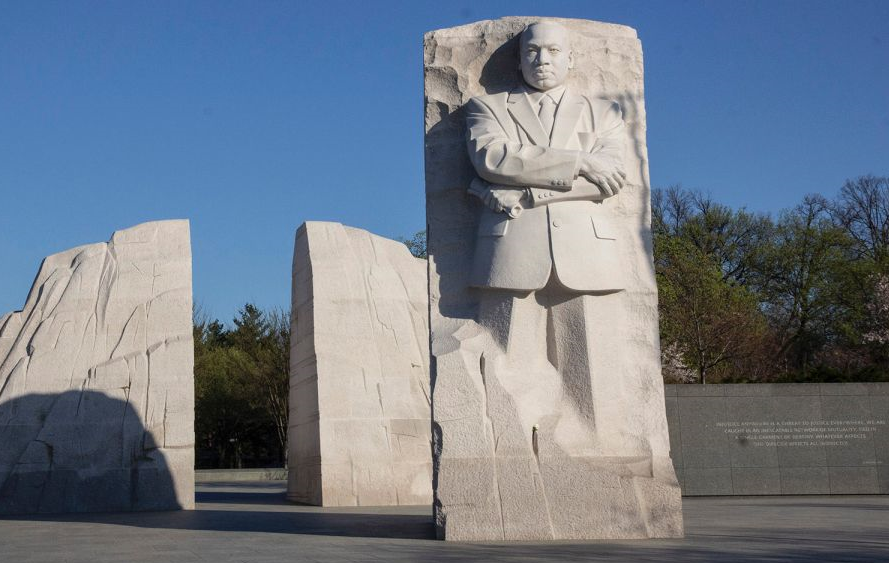
Martin Luther King, Jr. Memorial
Lei studied hundreds of photographs of King in preparation for the project. His comments on his research reveal the great respect he held for Dr. King: “I can still remember the moment my father put me on his knee and we read the Chinese version of ‘I have a dream’ together. I was 10 at the time.” In the China Daily newspaper of August 2, 2007, Lei said, “I have suffered myself, so I know what suffering is. Though I was not tortured as much as the African-Americans, I can understand how they felt, and I adore the hero who fought for the equal right of all people.” Lei described King as has having on “unyielding spirit.” He was inspired by King’s message “the goal could only be achieved in the way of non-violence, which gave him more pressure and led to his death, but in the end preached a confidence in peace in this world.”
The pose, arms crossed, is intended to illustrate King’s determination. Lei’s original concept of King holding a pen in one hand had to be changed because the architects of the project had made a mistake. Lei had to change the pen into a scroll at the last minute. Both ultimately served to represent Kings writings. The pose of the figure was thought to be too severe and too confrontational because King believed in non-violence.
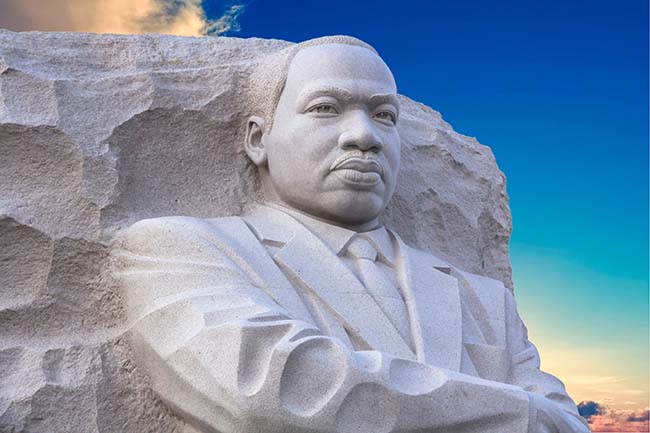
Lei presented a three-foot model to the committee in 2007. The facial expression on the first model was criticized because several people thought the face looked too Asian. Lei then made several portrait busts of King, each with a different expression. During the process, Lei consulted with the King family, who had final say. Martin Luther King III approved of the portrayal saying, “I’ve seen probably 50 sculptures of my dad, and I would say 47 of them are not good reflections—that’s not to disparage an artist. This particular artist—he’s done a good job.” The memorial was 80% completed when it arrived from China. Lei then finished the work on site. Lei said, “You can see the hope, but this serious demeanor also indicates that he’s thinking.”
The memorial was to be dedicated on August 28, 2011, the 48th Anniversary of the March on Washington. It was postponed until October 16, because of Hurricane Irene.
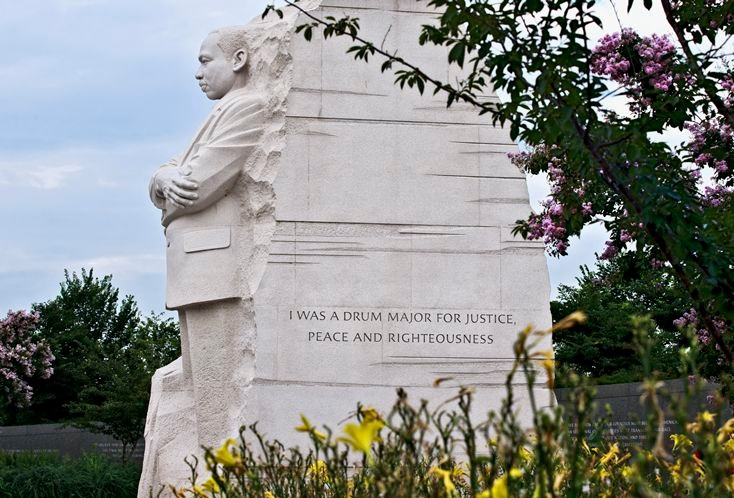
Martin Luther King. Jr. Memorial (2011 view)
One last controversy concerns the quotation carved on the memorial: “I was drum major for justice, peace and righteousness.” These words were spoken be King in a sermon at the Ebenezer Baptist Church in Atlanta, two months before his assassination in a1986. Maya Angelou and others said the truncated quote made King “look like an arrogant twit.” The full quote reads, “Yes, if you want to say that I was a drum major, say that I was a drum major for justice. Say that I was a drum major for peace. I was a drum major for righteousness. And all of the other shallow things will not matter.” The decision to remove the controversial quote was made in 2012, and Lei returned in 2013 to remove it, carving striations that would blend with the rest of the structure.
“His dream is very universal. It’s a dream of equality. He went to jail. He had been beaten, and he sacrificed his life for his dream. And now his dream comes true.” (Lei Yixin)
Note: The fourteen King quotes are carved into the 450-foot wall of the memorial. The quotes were carved by Nick Benson of Rhode Island, a third-generation stone carver, who is responsible for texts carved at the National Gallery, Frankin D. Roosevelt Four Freedoms Park, the National World War II Memorial, and the Dwight D. Eisenhower Memorial, and other locations. “
Beverly Hall Smith was a professor of art history for 40 years. Since retiring with her husband Kurt to Chestertown in 2014, she has taught art history classes at WC-ALL. She is also an artist whose work is sometimes in exhibitions at Chestertown RiverArts and she paints sets for the Garfield Center for the Arts.



Write a Letter to the Editor on this Article
We encourage readers to offer their point of view on this article by submitting the following form. Editing is sometimes necessary and is done at the discretion of the editorial staff.